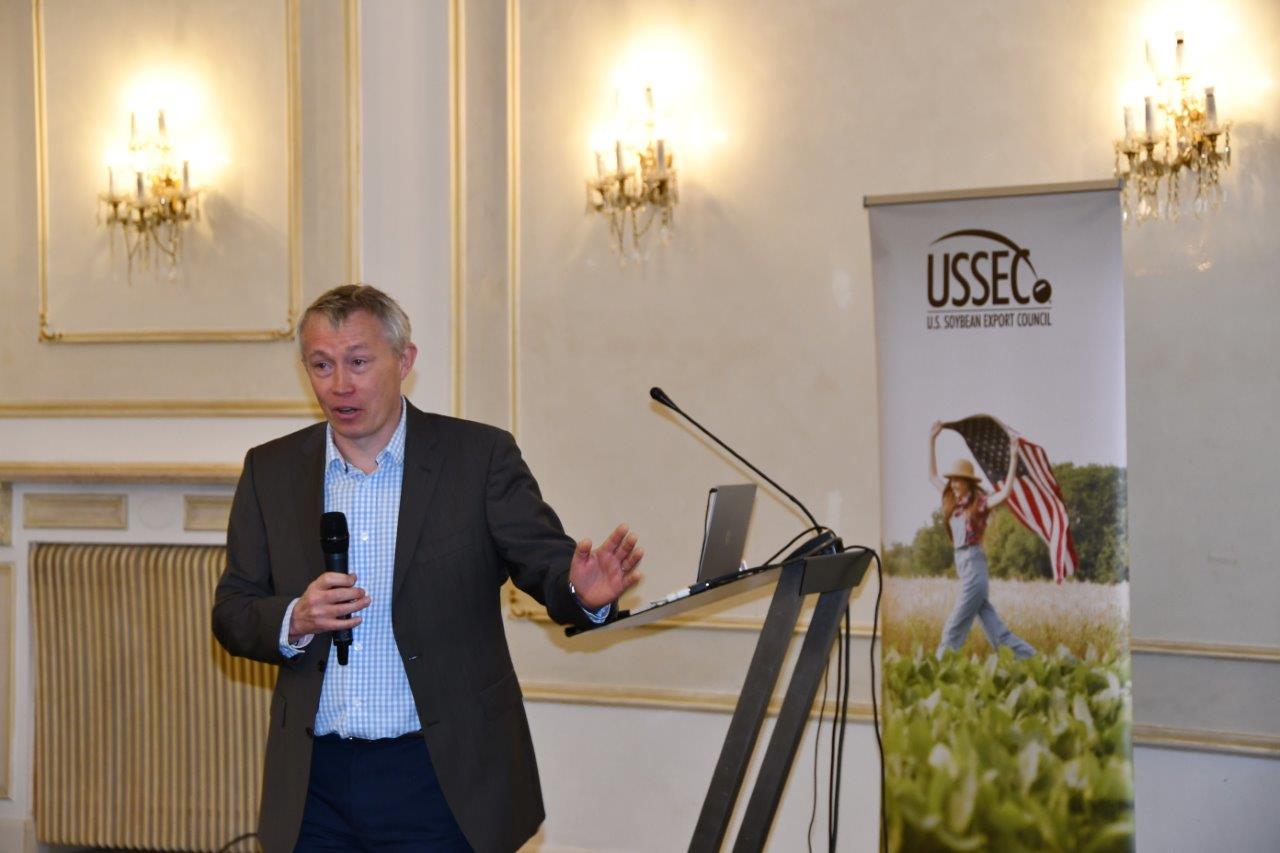U.S. Soy Promoted as Solution in Helping to Reduce Antimicrobial Use in Swine Feeding
- Category:
- Animal Utilization
- General News

In a rapidly changing world, the consumer’s interest in how meat and pork products have been produced is quickly changing and shaping the future of food production. These changes are equally creating difficulties and opportunities for the global livestock industry. This is particularly true in the EU, where the recent ban of antibiotic growth promoters in animal feeding is challenging commercial pig farms through poorer growing efficiency and increased stress and diseases levels in their animals. In the new context, nutritionists, veterinarians, and farmers should work together to find solutions for the restricted use of antimicrobials in livestock requires by improving and implementing adequate management, feeding and biosecurity practices to maintain healthy animals and achieve best performances.
In an effort to assist U.S. soy end users – swine integrators from Romania and Bulgaria, USSEC organized a series of events in April to disseminate the latest knowledge on nutritional strategies and educate nutritionists and veterinarians on key aspects for healthy and profitable pig production, including feed safety and ways to maintain gut health.

At the “Advances in Swine Diseases and Nutrition” seminar organized on April 2 in Bucharest, Romania, USSEC consultant Dr. Megan Niederwerder the role of the gut microbiome in reducing antimicrobial use in swine introduced to the audience. “The gut microbiome plays a critical role in providing a protective intestinal barrier, digesting and metabolizing nutrients, and developing as well as maintaining immunity. Birth route, diet, environment, infection, and genetics all play important roles in initial microbial colonization of the piglet gut as well as the continued shaping of the microbiome during the first several weeks of life. The relationship, balance, and mechanistic interactions between these microbes in the gut are extremely complex and not well understood in states of health or disease. However, there is growing evidence indicating the beneficial role that gut microbiome diversity plays in the outcome of infectious diseases,” said Dr. Niederwerder. “The gut microbiome modulation should be an alternative tool to improve the health and growth of pigs,” she added.
To answer the inquiries of the Romanian and Bulgarian swine industries regarding possible nutritional solutions for antibiotic-free pork production, USSEC consultant Dr. Gonzalo Mateos gave a set of state of the art data from the results of the research conducted at Madrid University, demonstrating the differences between origins for the digestibility of amino acids as a key advantage for U.S. soybeans at the same event in Bucharest.

“It is well known that pigs fed with poorly digestible ingredients and diets are at risk of developing larger intestinal microbial populations, particularly in stressful environments. Increased bacterial numbers will then compete for nutrients and could proliferate to pathogenic levels. In such conditions and in absence of antibiotic growth promoters, there will be an increase in variability in pig performances,” emphasized Dr. Mateos.
Another concern of the European swine companies is to preserve the welfare and health of breeding pigs in modern, commercial production systems. This is particularly true in the case of the use of fibrous diets, which seems to have broader applications in swine compared to poultry production. Strong regulations and tight profit margins have prompted the Romanian swine farmers to seek alternative approaches to feeding their reproduction animals.
USSEC consultant Dr. Carsten Perdersen introduced soy hulls as a solution to maintain intestinal cell function, particularly for sows. At the seminar organized on April 9 and 10 in Bucharest, Dr. Pedersen recommended the use of U.S. soy hulls in the sow gestation phase, mainly as a functional ingredient improving the reproductive performance of sows. In addition, soy hulls should be part of the solution in overcoming stomach ulcers in sows, which is a common problem of the modern genotypes.

Focusing on efficient utilization and absorption by the animals has never been more important for bridging nutrition, health and profitable pork production. Animal nutrition should be part of the solution in answering the needs to align the animal production with the current regulations and consumer demand.
In this regard, the inclusion of U.S. soy in pig feeding should improve diet digestibility, limiting proliferation of the hindgut bacteria by restricting the nutrients available to them. With its increased amino acids digestibility, U.S. Soy should promote optimum digestion conditions in the intestines and creates an environment where nutrients are taken up and used by the host animal, rather than by the resident bacteria.